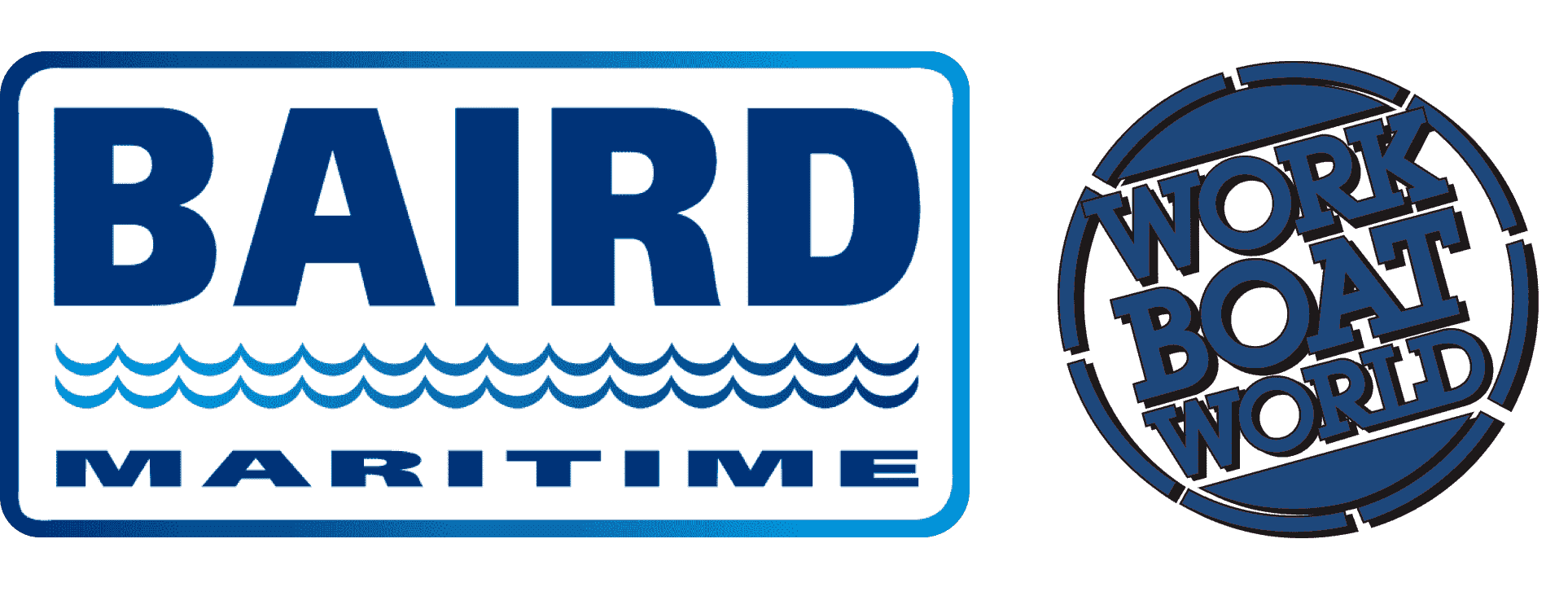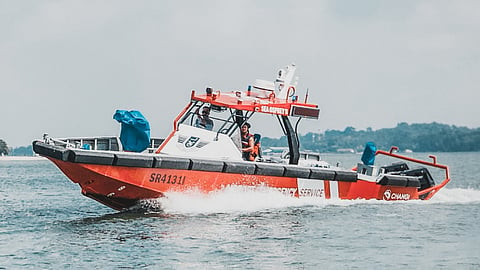VESSEL REVIEW | Sea Osprey I & Sea Osprey II – High-speed firefighting and rescue boats for Singapore's Changi Airport
Singapore's Changi Airport Group recently acquired two high-speed craft to expand the response capabilities of its Airport Emergency Service (AES) division.
The 14.22-metre (46.65-foot) Sea Osprey I and Sea Osprey II were designed by South Africa-based KND Naval Design while construction took place at the Singapore facilities of Dundee Marine and Industrial Services. A number of new technologies that were not available on the vessels in the AES’ existing fleet have been incorporated on the new response boats.
The boats will serve as first response SAR and firefighting platforms with space for three crewmembers and up to 19 rescued survivors on each vessel.
In addition to having the same 40-knot top speed and beaching capability as a 12-metre (39-foot) command craft also built by Dundee Marine for the AES, the 14-metre boats feature firefighting monitors with an 80-metre (260-foot) throw distance and a discharge rate of 300 cubic metres (10,000 cubic feet) per hour.
“The boats are equipped with advanced trim systems that allow for both active trim and manual trim control to optimise trim angle and reduce drag, resulting in improved speed, fuel efficiency, and overall vessel performance,” Spenser Tan, General Manager of Dundee Marine, told Baird Maritime.
Fast and agile response platforms
The monitor on each high-speed boat is also foam-capable and is connected to an FFS pump driven by a dedicated aft Steyr diesel engine. A deluge system located forward will enable the boat to get closer to the source of the fire, thus allowing operators to more easily direct the foam/water discharge where needed.
Sea Osprey I and II are each fitted with two Mercury petrol outboard engines and a joystick piloting system that allows intuitive and precise control during docking and low-speed manoeuvres. Tan said the latter system makes it easier to park in tight spaces in addition to enhancing operator confidence, especially under challenging conditions.
Equipped with advanced positioning systems
The boats are each fitted with a Sky Hook GPS anchor function that uses the GPS and engine controls to automatically hold position and heading. Because the vessels must remain stationary without manual input, even in strong currents or wind, the anchor function is especially valuable during firefighting operations or when the boats are placed on emergency standby.
"The joystick piloting system and the GPS anchor are complementing systems," said Tan. "They help maintain the position of the boat while the firefighting pump is being deployed."
The boats have aft towing winches and forward ramps, though the latter are manually controlled unlike the hydraulically-driven example on the Dundee Marine-built AES command boat.
Scot S2J jockey seats are available for the crew while 15 eight-person liferafts from Halo can be deployed into the water for coastal SAR missions.
Deck layouts emphasising safety and efficiency
Key systems on the vessels include Raymarine navigation equipment, Teledyne FLIR M346C thermal cameras, Icom VHF radios, and Setcom intercoms. Hempel paint and ultrasonic anti-fouling coating from Hull Shield were meanwhile used on the hulls.
Tan said that a tight building schedule as well as the classification society’s strict building standards and requirements posed challenges for Dundee Marine during the construction of the vessels.
"One of the biggest challenges was related to the limited deck space, which required careful planning and efficient use of every available area," he told Baird Maritime. "Since each vessel was small, we had to be strategic in designing the layout.
"A significant portion of the planning went into determining the optimal location for mandatory life-saving equipment. Only after this equipment was accounted for could we begin designing the seating layout [for rescued survivors] around it."
Sea Osprey I and II are classed by Bureau Veritas and will be operated primarily in Singapore's coastal waters though they may also be deployed to neighbouring countries if needed.


